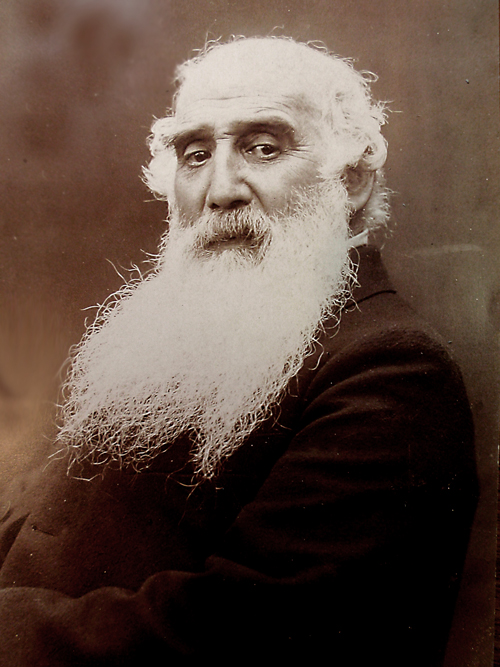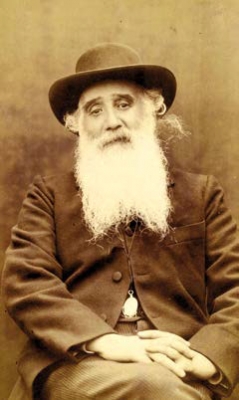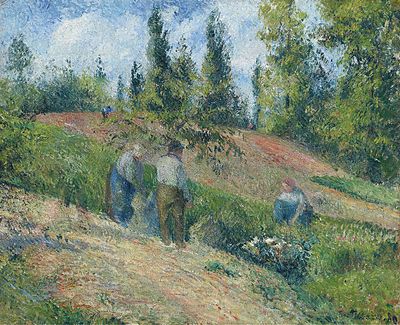
1830 - 1903
Camille Pissarro

description
Camille Pissarro was a French painter and graphic artist, one of the four first representatives of Impressionism. He painted landscapes, still lifes and portraits. He also worked in the styles of Divisionism (Pointillism) and Post-Impressionism.
In his childhood, the artist was fond of landscape painting and drawing. He was a disciple of Camille Corot, Charles-François Daubigny and Gustave Courbet. The young artist preferred to paint lighted objects in the air. From 1866 onward, Pissarro’s style became more distinct. His palette became lighter.
The basis of the artist’s paintings was a space, permeated with sunlight and light air. His works combine traditional landscape scenes, unusual light and a technique of drawing illuminated objects. The paintings of the mature Pissarro were created with dense strokes and filled with the physical sensation of light, which he aspired to express. Pissarro also did some paintings with watercolour and created many etchings and lithographs.
Key ideas:
– Works that have made Pissarro famous are a combination of traditional landscape themes and a kind of brushstroke in the drawing of light. Tangibly dense swabs give a sense of light or fog.
– Camille Pissarro loved landscape painting. However, he paid no less attention to the drawing.
– Air, as well as light, were the leading themes in Pissarro’s pictures from the very beginning. He carefully learnt the tints of objects to depict them.
– The artist stood for the idea of “the art for the art”. “Any art is anarchic if it is beautiful and professes kindness,” he said. Through his works, he sought to share his emotions with the world.
– Pissarro proved that being a peasant is not necessary to express all the beauty of the fields in the picture.
– According to him, a beautiful work of art was already a challenge to the bourgeois taste.
– As an avant-gardist, he rejected bourgeois society and power and admired human personality.
– The artist was optimistic and believed in the early arrival of an anarchist society in which people freed from religious and capitalistic ideas would be able to appreciate his art. Anarchism allowed him to express his understanding of beauty.
In the 1860s, Pissarro’s palette became brighter. The central theme of his works was space full of sunlight. By the end of the decade, he had created his own confidently firm style.
1830
1855
1859
1863
1870
1871
1874
1885
1889
1892
1903
Рождение художника
Study

Exhibited his work at The Salon

Three paintings at the Salon des Refusés

Style of open air painting

Found his house plundered

Five paintings

Pointillism

Built a workshop

The first retrospective exhibition

The death of the artist

Camille Pissarro
On Artist
flow
Realism
Impressionism
friends
Edgar Degas
Oscar-Claude Monet
Alfred Sisley
Paul Cézanne
Georges Seurat
Pierre-Auguste Renoir
Paul Gauguin
artists
Louis Anquetin
Vincent van Gogh
Mary Stevenson Cassatt
Edouard Manet
Gustave Courbet
Camille Corot
Charles-Francois Daubigny
Isidore Dagnan
By Artist
flow
Impressionism
Post-Impressionism
friends
Oscar-Claude Monet
Mary Stevenson Cassatt
Georges Seurat
Paul Cézanne
Pierre-Auguste Renoir
artists
Louis Anquetin
Vincent van Gogh
Mary Stevenson Cassatt
Paul Gauguin
Pierre-Auguste Renoir
